Culmination, as defined by the dictionary, means “to end or arrive at a final stage”. Our testing on how accurate factory ammo is when paired with a custom 6mm Creedmoor, has come to a close. To recap, Part One explained the reasons for the build, the questions that needed to be answered and the components that were chosen to complete the build. Part Two covered the range report, with 8 different factory loads and the results of that testing. Part Three of this series, will cover the ammunition chosen, the rockchuck hunt and finally, my thoughts on the project as a whole (short synapses).
Ammunition Information:
After completing the range testing, I found that the Barnes VOR-TX LR – 95 grain Barnes LRX was the most accurate hunting round out of the lot of ammunition we compared. The VOR-TX LR ammunition uses a 95 grain LRX, long-range, hunting bullet. This lighter bullet is traveling at an average of 3323 feet per second (according to our testing) and has a factory listed B.C. of .436.
Barnes LRX bullets have been developed to match the advancements in rifle accuracy and extended-range optics. The LRX features a long profile and boattail design that delivers match-grade accuracy at long range with an incredibly high ballistic coefficient and terminal performance that delivers the quick, clean, ethical kills you’ve come to expect from Barnes.
The all-copper LRX (Long Range X Bullet) opens instantly on impact into four razor-sharp petals that plow a wide wound channel and deposit massive amounts of energy throughout the entire length of the cavity. High weight retention sustains bullet momentum for maximum destruction of tissue, bone and vital organs to effectively and humanely take down game at close and extreme distances. – BarnesBullets.com
Ammunition Ballistics and Energy:
This chart covers the ballistics and energy of the 6mm Creedmoor using the Barnes ammunition listed above. These are our numbers, developed from the day we spent at the range:
The Hunt:
Although our initial plan was to shoot the 6mm Creedmoor at long-range for rockchucks, the weather in Southern Idaho changed dramatically while I was there. Instead of balmy 80 degree weather, the temperatures dropped into the 50s, with steady rain and extremely gusty winds, as a Northern storm front dropped into the area. That weather caused us to change our plans from extreme long-range, to whatever we could cobbled together for a hunt. Thankfully, with a few breaks in the weather, I was able to take a handful of rockchucks at ranges from 91 to 272 yards. The wind was a challenge, more so trying to keep my rifle still while shooting, than doping it for the 200+ yard shots. The ammunition being shot out of our custom build shot well, so ranging, then dialing my shots in, was a matter of figuring out the wind (when possible) and making the appropriate adjustments to the Vortex Strike Eagle riflescope.
Although they are not in the order they were shot in the field, I’m going to give you a short description of each shot set-up, as well as the range and the results (which you can watch in the video).
Rockchuck One – 115 Yards:
When it came to bullet energy induced flight, this rockchuck was the hands down the winner. After locating him in my binoculars, I set-up in a position that allowed for a shot up into the rocks. Typically, I like to shoot prone, but the elevation at the 115 yard range, forced me to shoot standing, utilizing a bag and a fence post. My shot was slightly low, hitting the rock and subsequently, his lower chest, blowing him up into the air and landing a few feet away, dead. The bullet and energy from the 6mm Creedmoor, did its job. This rockchuck was down!
Rockchuck Two – 227 Yards:
This rockchuck was a difficult shot. After spotting it sunning on a tall rock, I set-up prone in some tall grass and dialed everything in for the shot. If you’ve hunting canyons during a storm, you know that the wind is very unpredictable and can cause havoc when trying to place a .243″ projectile into the face/chest of a small varmint at any range! After ranging the rockchuck, I dialed in the necessary adjustments and waited for a lull in the wind. I finally found that lull and took the shot. The bullet hit mere inches below the rockchuck, sending him scurrying to the back of the boulder. Realizing that I didn’t adjust quite high enough, I dialed in another half-mil and waited. As they often do, the rockchuck came back to see what disturbed him from his spot. The second shot hit the mark, sending the ‘chuck backwards over the back side of the boulder! The bullet had entered just below his chin and blew out the back. There was a lot of blood and some guts in the location where it was hit, so the bullet did its job once again and resulted in a very clean kill.
One note, the OSS Helix HX-QD 762 suppressor helped keep the sound of my shot at a minimum and not bouncing down the canyon, scaring the rockchuck and removing my second chance for the shot. We at Varminter are strong advocates for shooting suppressed whenever possible. It will allow for follow-up shots and keeps the noise level down, so other varmints in the area you are shooting don’t go down from fear of the gunshot.
Rockchuck Three – 91 Yards:
Depending on available feed, rockchucks can gorge themselves and become very large. Sometimes looking like small dogs, as they ramble across alfalfa fields, or their rocky hideouts. This rockchuck was one of those. Even though he was only 12 pounds, finding and shooting a ‘chuck this big can be rare. It took a while to spot this one, but Eric found it in his binoculars and described the location to me so I could make the shot. Descriptions in the field can be annoying, because pointing out a head/partial chest in the rocks, when the rock field is 200 yards long and 100 yards tall, covered in rocks that look very similar, is almost impossible. “Next to the square rock, above the bush, at 3 o’clock”, doesn’t always cut it. Once located though, I set-up for the shot and dialed in my scope so I could feed the bullet past the rocks and under the rockchuck’s chin. When the bullet hit him, it launched him out of his hole, bounced him against a rock and then he slowly rolled down a couple of feet coming to a rest in a ball of fur and blood. I could see that the bullet exited through the rear portion of his back. Perfect shot and instant kill. That’s what we strive for and achieved!
Rockchuck Four – 272 Yards:
We spotted this rockchuck out on a ledge across the valley from our location. I set-up prone on the ground, ranged it again and dialed in for the shot. I only had a small portion of the head, neck and chest, so I placed the crosshairs right on the head and squeezed. The bullet hit him hard, spinning him off the ledge to the opposite side, dead. The head-shot caused the typically nervous jumping, which sent the rockchuck tumbling down the mountain. It was a long haul to go pick him up, but documenting the results of the bullet damage is imperative whenever we are in the field. This rockchuck weighed 10.50 pounds and was the second largest one we shot in this area.
Rockchuck Five and Six – The Double – 250 Yards:
Target shooters rarely discuss bullet energy. Most of the time, there is no need. However, for hunters, bullet energy is as important as bullet weight and ballistics (which both tie-in to energy). This build was meant to shoot at longer ranges, anywhere from 250 out to 600 yards was the original plan for this hunt. As stated above, the storm that hit the area nixed the chances at the long end of that spectrum, but we still got the chance to see the bullet energy shed itself within the rockchucks we were shooting. From exit wounds on 12 pound ‘chucks, to solid, skull mashing head-shots at 272 yards, the 6mm Creedmoor was pushing these 95 grain bullets at speeds that created high energy and solid hits.
“I realized, there were two rockchucks on the rock, lined-up perfectly next to each other!”… “Eric waited the obligatory time after the hit (for editing purposes), then he shouted out, “Great shot! A double!” – David Hillis
This brings me to the final shot shown in the video. Although the video quality isn’t as great as the others (mirage was wicked at that time), you will see a shot that proves out the theory that the 6mm Creedmoor is a beast of a cartridge on varmints, with energies that allow for taking long shots with complete confidence. I spotted a rockchuck sitting atop a sharp boulder, during a break in the weather, sunning itself. As I set-up prone for the shot, I ranged the rock, dialed my scope and settled in for the shot. There was a slight lip sticking up in front of the ‘chuck, so I waited to see if it would move a bit higher to offer more of a target. Suddenly, the rockchuck turned its head and I realized, there were two rockchucks on the rock, lined-up perfectly next to each other! I acknowledged that Eric had both in the camera and decided to “send one at ’em”. At the shot, we watched as the front rockchuck immediately dropped down against the rock, while the one behind it got launched off the boulder, backwards. The front one started to shudder a bit, but the huge hole in it’s chest showed that it too, was DRT. He slid off the rock and the double was confirmed! Eric waited the obligatory time after the hit (for editing purposes), then he shouted out, “Great shot! A double!”. THAT shot was a complete confirmation of the pure energy behind this 6mm Creedmoor cartridge!
Final Thoughts on The Hunt Report:
After spending a fair amount of time in the field with our 6mm Creedmoor custom build and the most accurate factory hunting ammunition (Barnes VOR-TX LR – 95 grain Barnes LRX), our questions were completely answered. With question one being:
- How accurate would this combination be?
Part Two of our series proved that this custom build was extremely accurate with factory ammunition, with 7 out of 8 groups being Sub-MOA. Of those 7, four of those groups averaged less than 3/4-MOA.
The sole purpose for Part Three of our series, was to answer question #2:
- Would the results be adequate for the intended use (250 – 500/600 yard hunting on medium sized varmints)?
This hunt report definitively answers question #2. Although I was unable to extend my shots past 272 yards, the accuracy and downrange energy showed that the ultimate intended use for long-range hunting would not be an issue. As the energy numbers in the chart listed above show, the 6mm Creedmoor is still maintaining over 1200 foot pounds of energy at 500 yards! This energy far out performs many of the other smaller varmint calibers. For example, the energy of the 95 grain Barnes bullet, at 200 yards, is 1829 fpe. By comparison, the popular .22-250 Remington, shooting Hornady 55 grain factory loads, pales in comparison with only 1003 foot pounds of energy. For those Varminters who start thinking that the 6mm Creed/.22-250 comparison is unfair. How’s this? The .243 Winchester falls short of the 6mm Creedmoor’s energy numbers, while using the same weight bullet! The Hornady 243 Win 95 gr SST Superformance ammunition, lists a 200 yard fpe of 1479 foot pounds of energy, while the Barnes 95 gr load we used, still retains 350 fpe MORE than the .243. Even with anomalies, such as lighter loads, the 350 fpe is difficult to overcome when shooting most of the more popular .243 factory ammunition offerings in the same bullet weight. The Barnes (and other) 6mm Creedmoor factory ammunition simply outperforms its counterparts in the varmint hunting realm.
I hope you enjoyed this series and the exploration and discovery of our findings on how accurate factory ammunition is in a custom 6mm Creedmoor rifle and all of the sub-topics we were able to cover while answering our original questions. We plan on completing more reports covering the topics that our readers are most interested in, so please subscribe and follow us here on Varminter.com, as well as our media pages.
Read Part One of our Series: http://www.varminter.com/how-accurate-is-factory-ammo-when-paired-with-a-custom-6mm-creedmoor-rifle-part-i-the-rifle-build/
Read Part Two of our Series: http://www.varminter.com/how-accurate-is-factory-ammo-when-paired-with-a-custom-6mm-creedmoor-rifle-part-ii-the-range-report/
- Desert Tech TREK-22 Ruger 10-22 Bullpup Stock - January 15, 2024
- Dark Energy Poseidon Battery Packs – Gear We Use – Episode Two - January 11, 2024
- Custom 6.5 Creedmoor Rifle Build with the First Hunt Using the Burris Veracity PH Riflescope - March 13, 2023

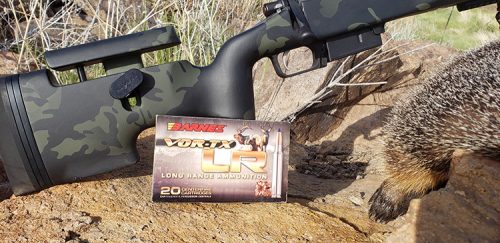



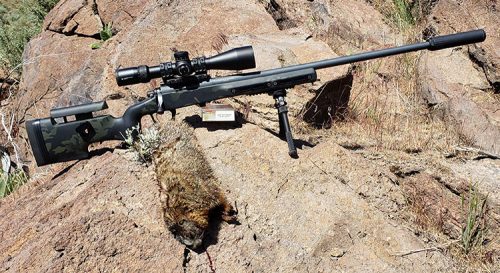
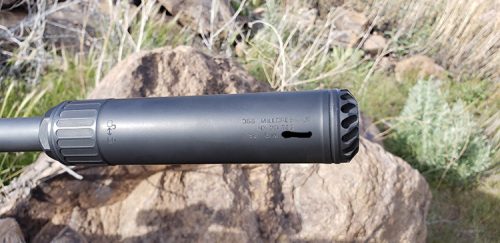
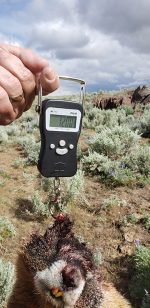
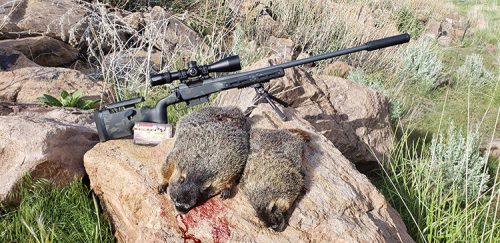
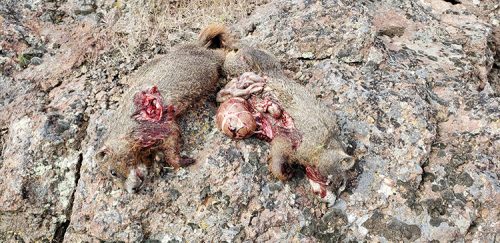
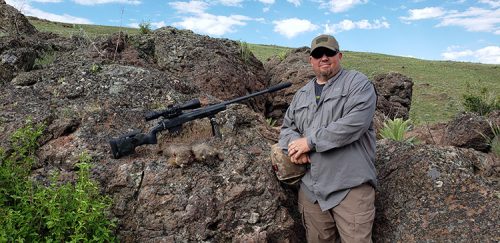
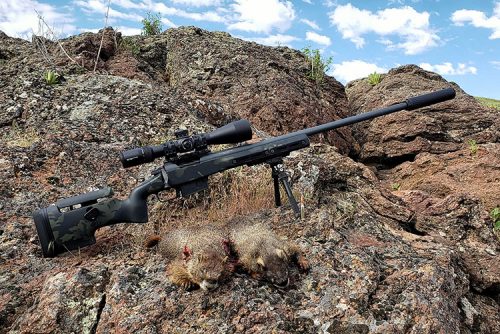
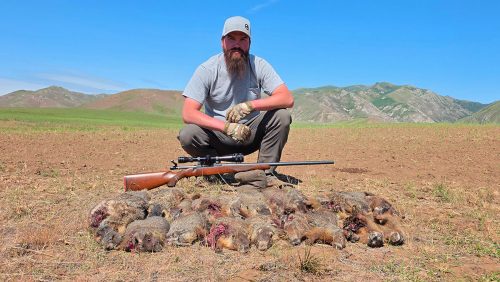
[…] Read Part Three of our Series – The Hunt: http://www.varminter.com/how-accurate-is-factory-ammo-when-paired-with-a-custom-6mm-creedmoor-rifle-… […]